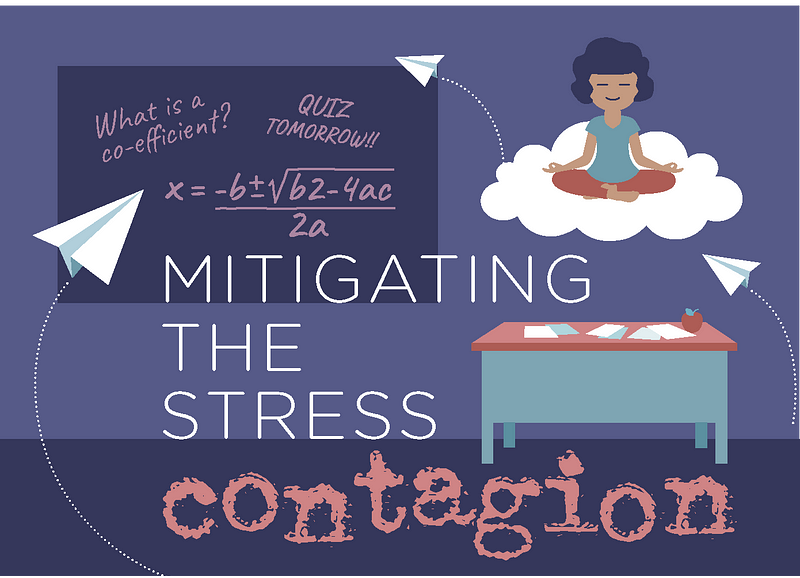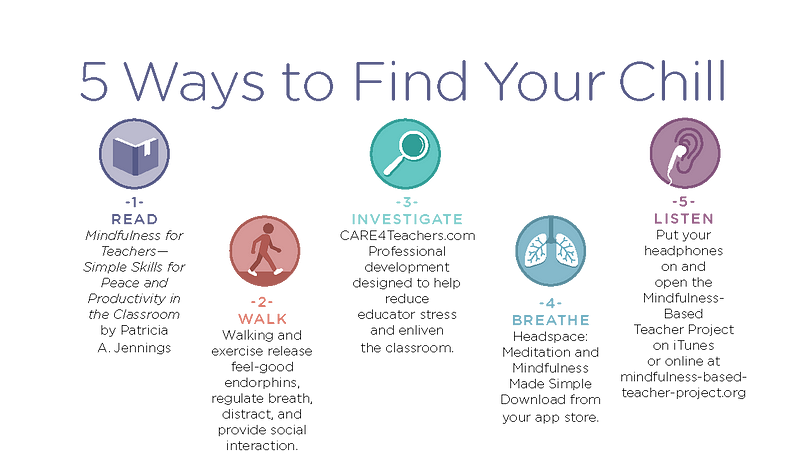Mitigating the Stress Contagion
Compassion fatigue is real, rampant, and often unacknowledged.

A new work-life survey from the American Federation of Teachers and the Badass Teachers Association, a grassroots education activist organization, confirms it — teachers are more stressed out than ever before. USA Today broke it down: “More than half of the educators point out their mental health is an issue: 58% said their mental health was ‘not good’ for seven or more of the previous 30 days. A similar survey in 2015 found just 34% of respondents felt the same.”
The results of new AFT survey on well-being, working conditions and stressors for teachers and school support staff…www.aft.org
Educator stress isn’t new, but it’s been exacerbated by a number of things in the past 10 years — testing and curriculum mandates implemented with little support, lack of autonomy in the classroom, paperwork, growing class sizes, stunted funding, student welfare, crisis management, safety concerns, lack of school board and community respect, civility, insufficient professional development and collegial supports, economic concerns … the list goes on.
Like police officers, firefighters, health care staff, and counselors, educators are confronted daily with a barrage of professional demands plus the mix of student issues they face. The resulting exhaustion is called compassion fatigue. It’s real, it’s rampant, and it’s often unacknowledged.

With more and more students coming to school suffering their own trauma and adverse childhood effects (ACEs), educators experience vicarious and secondary trauma which appear as physical, emotional, and behavioral symptoms that affect their cognitive abilities, relationships, and world view.
Educators can help students move away from their trauma towards growth, resilience, success, and happiness.mseanewsfeed.com
This cyclical transferring of stress is almost contagious — ‘round and ‘round it can go — unnamed and unaddressed until no one is able to perform to the best of their ability. Student stress and trauma is felt deeply by educators already challenged by inadequate supports and students are further stressed by a system unable to serve their needs academically, emotionally, and socially.
Add the stress educators carry themselves to the compassion fatigue and vicarious and secondary trauma they feel for their students and the mix can be overwhelming. The result can be shutting down to students when they need a gentle voice the most — and burning out.
“It is clear from a number of recent research studies that teaching is one of the most stressful professions, and that teachers need adequate resources and support in their jobs in order to battle burnout and alleviate stress in the classroom,” said Kimberly Schonert-Reichl, co-author of a University of British Columbia study about the relationship between students and educator stress.
“If we do not support teachers, we risk the collateral damage of students.” It’s obvious that school and district-wide recognition and action to combat educator stress — along with attentive self-care by educators themselves — is needed to address and mitigate this increasing problem. It won’t be a moment too soon.

